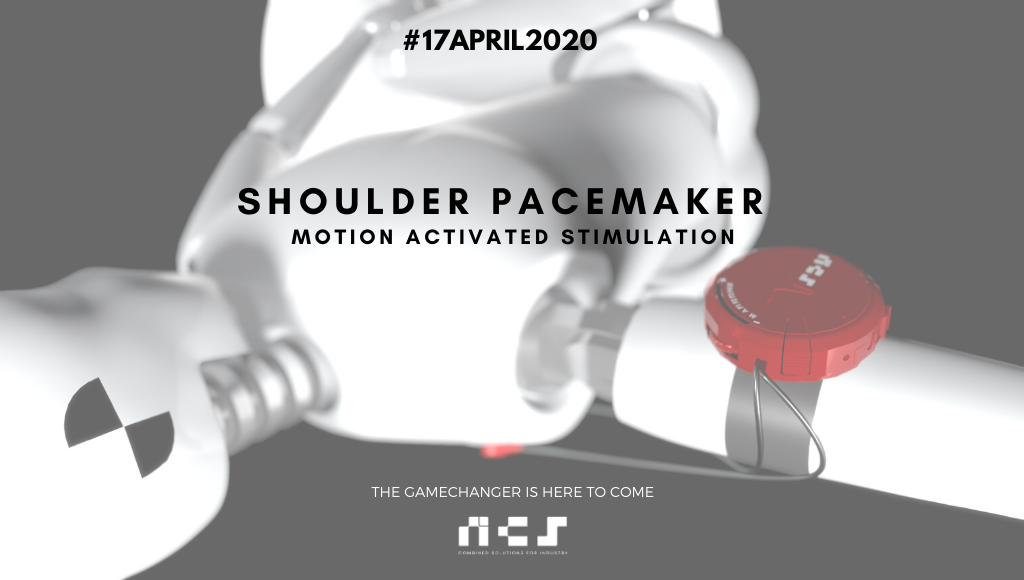
From standard electrostimulation to Motion Activated Stimulation
Conventional electrical muscles stimulation & its limitation
Electrostimulation, also called Electro Muscle Stimulation (EMS), is an effective training method for improving muscle quality and strength without fatigue and with limited stress exerted on the joints and tendons.
Due to this fact, the electrostimulation is considered a powerful training tool for muscles and has many applications in various fields, including training, cosmetics, and in physical therapy. In fact, conventional EMS has proven to be effective in treating many different musculoskeletal pathologies, including rheumatoid arthritis, scapular dyskinesis, rotator cuff disease, adhesive capsulitis, knee and hip osteoarthritis, muscle atrophy, patellofemoral syndrome and sarcopenia.
Limitations in conventional EMS are characterized by the fact that the parameters of stimulation are constant over time not allowing the patient to understand when the muscle should be contracted; not as a function of a movement. In this situation, the muscles can be strengthened, but the patient often loses the ability to recognize the correct muscle activation timing. Correct muscle activation patterns are fundamental for proper kinematics and many pathologies, including joint subluxations, can be treated by restoring the correct muscle timing activation.
The Motion Activated Stimulation innovation of Shoulder Pacemaker™
Compared to conventional EMS, FES can enhance motor learning and increase central nervous system plasticity [2].
Electromyography (EMG) is usually used for on/off control in FES. During a specific movement, the residual muscle activity is recognized; once the muscle activity overcomes a predetermined threshold, the electrostimulation is activated helping the patient to finish the movement. However, EMG-controlled FES requires some residual muscle activation; this drawback limits the application of this approach.
The new generation of EMS devices was developed in an attempt to overcome the limitations of both conventional EMS and EMG-controlled FES. The idea is to modulate the parameters of electrostimulation according to the movement recognized by inertial sensors during specific movements.
The Motion Activated Stimulation (MAS) represents the final solution for an effective EMS rehabilitation process: it consists of EMS treatment guided by the movement performed by the subject.
The Shoulder Pacemaker device is the first patented device developed exclusively for MAS. Its unique design combines an electrostimulation module with integrated inertial sensors to provide patient activated stimulation.
The embedded motion sensors automatically recognize the different phases of exercise and detects the correct timing for electrostimulation: this unique feature allows the device to dynamically interact with the patient to restore normal pace and equilibrium.
Electrostimulation is guided by the kinematic information detected by inertial sensors, offering a more precise and effective treatment during therapy. Using MAS devices, through a feed-forward mechanism, patients quickly learn how to activate their muscles appropriately in order to restore proper kinematic.
Vuoi provarlo?